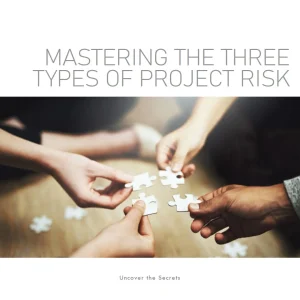Introduction
The role of an IT project coordinator has become increasingly vital, especially in hybrid environments where team members may be dispersed across various locations. An IT project coordinator is responsible for overseeing project timelines, ensuring effective communication among team members, and facilitating the successful delivery of IT projects. In a hybrid work setting, where some team members work remotely while others are on-site, the coordinator must adapt to new challenges and leverage technology to maintain productivity and collaboration.
The shift towards remote work has been monumental, particularly in the wake of the COVID-19 pandemic. This transition has fundamentally altered how IT projects are managed, necessitating a reevaluation of traditional project management practices. As teams become more geographically diverse, the need for effective communication and collaboration tools has never been more critical. The ability to coordinate tasks, share information, and track progress in real-time is essential for ensuring that projects remain on schedule and meet their objectives.
Remote collaboration tools have emerged as indispensable assets for IT project coordinators. These tools facilitate seamless communication, enhance team collaboration, and provide a centralized platform for project management. By utilizing these technologies, project coordinators can bridge the gap between remote and on-site team members, fostering a cohesive work environment that promotes engagement and accountability. As we delve deeper into the best practices for managing remote teams effectively, it is essential to recognize the pivotal role that these collaboration tools play in enhancing IT project coordination in a hybrid world.
Understanding Remote Collaboration Tools
Remote collaboration tools have become essential for effective coordination, especially in a hybrid work environment. These tools not only facilitate communication but also enhance productivity and streamline project workflows. Below is an overview of various remote collaboration tools categorized by their functions, along with insights on selecting the right tools based on team size and project complexity.
Categories of Remote Collaboration Tools
Communication Tools
- Slack: A widely used messaging platform that allows for real-time communication through channels, direct messages, and integrations with other tools. It is particularly effective for quick updates and team discussions.
- Microsoft Teams: This tool combines chat, video conferencing, and file sharing, making it a comprehensive solution for team communication. It integrates seamlessly with other Microsoft Office applications, which is beneficial for teams already using those tools.
Project Management Tools
- Trello: A visual project management tool that uses boards, lists, and cards to organize tasks. It is user-friendly and ideal for teams that prefer a visual approach to tracking project progress.
- Asana: A robust project management platform that allows teams to create tasks, set deadlines, and track project milestones. It is suitable for more complex projects requiring detailed task management and collaboration.
File Sharing Tools
- Google Drive: A cloud storage service that enables teams to store, share, and collaborate on files in real-time. Its integration with Google Workspace makes it a popular choice for document collaboration.
- Dropbox: Another cloud storage solution that focuses on file sharing and synchronization. It is particularly useful for teams needing to share large files securely.
Team Collaboration Tools
- Miro: An online collaborative whiteboard platform that allows teams to brainstorm, plan, and visualize ideas together. It is especially useful for remote workshops and creative sessions.
- Notion: A versatile tool that combines note-taking, task management, and database functionalities. It is ideal for teams looking to centralize their documentation and project management in one place.
Selecting the Right Tools
When choosing remote collaboration tools, it is crucial to consider the following factors:
- Team Size: Larger teams may benefit from tools that offer advanced features for managing multiple projects and team members, while smaller teams might prefer simpler, more intuitive tools that facilitate quick communication and task management.
- Project Complexity: For complex projects with numerous tasks and dependencies, robust project management tools like Asana or Trello are essential. Conversely, for straightforward projects, basic communication tools may suffice.
- Integration Capabilities: Selecting tools that integrate well with existing systems and workflows can enhance efficiency and reduce the learning curve for team members.
By understanding the various remote collaboration tools available and their functionalities, IT project coordinators can enhance their team’s coordination and productivity in a hybrid work environment. The right combination of tools tailored to the team’s needs can significantly improve project outcomes and foster a collaborative culture.
Best Practices for Using Collaboration Tools
Particularly within hybrid work environments, the effective use of collaboration tools is paramount for IT project coordinators and team leaders. Here are some best practices to maximize the potential of these tools and enhance team coordination:
- Encourage Consistent Tool Usage: To minimize miscommunication and ensure that all team members are on the same page, it is crucial to establish a standard set of collaboration tools that everyone uses. This uniformity helps in creating a cohesive communication environment where information is easily accessible and shared among all team members. By promoting consistent usage, teams can avoid the pitfalls of fragmented communication that often arise from using multiple, incompatible platforms [1][11].
- Set Clear Communication Protocols: Establishing guidelines for when to use specific communication methods can significantly enhance efficiency. For instance, defining scenarios for using chat versus email can help streamline interactions. Chat can be reserved for quick questions and real-time discussions, while email can be utilized for more formal communications or detailed updates. This clarity not only reduces confusion but also helps team members prioritize their responses based on the urgency and nature of the communication [8][12].
- Leverage Integrations with Other Tools: Collaboration tools should not operate in isolation. By integrating these tools with other software used by the team, such as project management platforms or cloud storage solutions, IT project coordinators can create a seamless workflow. This integration allows for automatic updates, centralized information access, and improved task management, ultimately leading to enhanced productivity and collaboration among team members [4][15].
By implementing these best practices, IT project coordinators can foster a more effective and collaborative environment, ensuring that their teams remain aligned and productive, regardless of their physical locations.
Fostering Team Engagement and Communication
Especially within a hybrid work environment, fostering team engagement and maintaining open lines of communication are paramount. Here are some best practices that IT project coordinators and team leaders can implement to enhance collaboration and ensure that remote teams remain connected and productive.
- Implement Regular Check-Ins and Status Updates: Establishing a routine of regular check-ins is crucial for keeping team members aligned and informed. These meetings can take various forms, such as daily stand-ups or weekly progress reviews, allowing team members to share updates on their tasks, discuss challenges, and celebrate achievements. This practice not only promotes accountability but also ensures that everyone is on the same page regarding project goals and timelines. Regular communication helps to mitigate misunderstandings and keeps the momentum going throughout the project lifecycle [5][6].
- Encourage Informal Virtual Gatherings: To build rapport and strengthen relationships among team members, it is beneficial to organize informal virtual gatherings. These can include virtual coffee breaks, team-building activities, or casual catch-up sessions. Such gatherings provide a platform for team members to connect on a personal level, fostering a sense of belonging and camaraderie. This social interaction is essential in a remote setting, as it helps to break down barriers and encourages collaboration beyond formal work discussions [10][12].
- Utilize Feedback Loops: Creating a culture of feedback is vital for ensuring that team members feel heard and valued. Implementing structured feedback loops, such as regular surveys or one-on-one check-ins, allows team members to express their thoughts on project processes, team dynamics, and their own experiences. This practice not only empowers individuals but also provides project coordinators with valuable insights to improve team performance and morale. By actively seeking and acting on feedback, leaders can demonstrate their commitment to team members’ growth and satisfaction, which is crucial for maintaining engagement in a remote environment [9][13].
By focusing on these key areas, IT project coordinators can enhance team engagement and communication, ultimately leading to more successful project outcomes in a hybrid work setting.
Managing Project Timelines and Deliverables
Particularly in a hybrid work environment, effective coordination of project timelines and deliverables is crucial. Here are some best practices that IT project coordinators and team leaders can implement to enhance project planning and tracking in a remote setting:
- Utilize Visual Project Tracking Tools: Gantt charts and Kanban boards are invaluable for visualizing project timelines and workflows. Gantt charts provide a clear overview of project schedules, allowing teams to see task dependencies and overall progress at a glance. Kanban boards, on the other hand, facilitate task management by visualizing work in progress, helping teams to prioritize tasks and manage workloads effectively. These tools not only enhance transparency but also foster collaboration among team members, as everyone can see the status of various tasks and projects in real-time.
- Establish Clear Deadlines and Accountability Measures: Setting explicit deadlines is essential for maintaining momentum in remote teams. IT project coordinators should ensure that all team members understand their responsibilities and the timelines associated with their tasks. Implementing accountability measures, such as regular check-ins and progress updates, can help keep team members focused and motivated. This approach not only clarifies expectations but also encourages a sense of ownership among team members regarding their contributions to the project.
- Adapt Agile Methodologies for Remote Work: Agile methodologies, known for their flexibility and iterative approach, can be particularly effective in managing remote teams. By breaking projects into smaller, manageable sprints, teams can adapt to changing requirements and feedback more efficiently. Regular stand-up meetings, even in a virtual format, can help maintain communication and alignment among team members. Additionally, utilizing tools that support agile practices, such as Scrum boards or sprint planning software, can enhance collaboration and ensure that everyone is on the same page regarding project goals and deliverables.
By implementing these best practices, IT project coordinators can effectively manage project timelines and deliverables, ensuring that remote teams remain productive and engaged in a hybrid work environment. This strategic approach not only enhances project outcomes but also fosters a collaborative culture that is essential for success in today’s dynamic IT landscape.
Overcoming Challenges in Remote Coordination
Remote collaboration has become a necessity, especially in a hybrid work environment. IT project coordinators face unique challenges that can hinder effective team coordination. Here are some common issues and best practices to address them:
Common Challenges
- Time Zone Differences: Coordinating meetings and project timelines can be complicated when team members are spread across various time zones. This often leads to delays in communication and decision-making, which can impact project timelines and deliverables.
- Technology Limitations: Remote teams often rely on technology for communication and collaboration. However, inconsistent access to technology and varying levels of digital literacy can create barriers to effective collaboration. High latency and packet loss in wide-area networks (WANs) can further exacerbate these issues, leading to frustration and decreased productivity [4][10].
- Team Isolation: The lack of face-to-face interaction can lead to feelings of isolation among team members. This can affect morale and engagement, making it difficult to foster a cohesive team environment. Miscommunication and misunderstandings are also more likely to occur in a remote setting, which can hinder collaboration [11][12].
Solutions
- Flexible Meeting Times: To accommodate team members in different time zones, IT project coordinators should implement flexible meeting schedules. This may involve rotating meeting times to ensure that no single group is consistently inconvenienced. Utilizing asynchronous communication tools can also help keep everyone informed without requiring simultaneous participation.
- Training Sessions: Providing training sessions on collaboration tools and best practices can enhance team members’ confidence and competence in using technology effectively. This can help bridge the gap created by technology limitations and ensure that all team members are on the same page regarding project goals and expectations [3][15].
- Regular Team Bonding Activities: To combat feelings of isolation, it is essential to foster a sense of community within the team. Regular team bonding activities, such as virtual coffee breaks, team-building exercises, or informal check-ins, can help strengthen relationships and improve team dynamics. These activities encourage open communication and collaboration, which are vital for project success [9][14].
- Establishing an Escalation Process: Having a clear escalation process for unresolved issues is crucial in a remote work environment. This ensures that problems are addressed promptly and do not escalate into larger issues that could derail project timelines. IT project coordinators should define clear roles and responsibilities for team members regarding issue resolution, ensuring that everyone knows how to escalate concerns effectively [2][10].
By recognizing these challenges and implementing effective strategies, IT project coordinators can enhance remote collaboration and ensure successful project outcomes in a hybrid world.
Measuring Success in Remote IT Projects
Measuring the success of remote projects is crucial for IT project coordinators and team leaders. Here are some best practices and metrics to effectively evaluate the effectiveness of remote project coordination.
Key Performance Indicators (KPIs) for IT Projects
Defining relevant KPIs is essential for assessing project performance. Some important KPIs for IT projects include:
- Task Completion Rates: This metric tracks the percentage of tasks completed on time, providing insight into team productivity and efficiency [9].
- Project Milestones Achieved: Monitoring the achievement of key milestones helps gauge progress and identify potential delays early on [9].
- Adherence to Deadlines: Evaluating how well the team meets deadlines is critical for understanding time management and overall project pacing [9].
- Budget Variance: Comparing actual spending against the budget can highlight financial efficiency and resource allocation effectiveness [7].
Importance of Gathering Feedback
Regular feedback from team members and stakeholders is vital for continuous improvement and project success. It allows project coordinators to:
- Identify Challenges: Direct feedback helps uncover issues that may not be visible through metrics alone, such as team morale or communication barriers [4].
- Adjust Strategies: Understanding team dynamics and stakeholder expectations enables coordinators to adapt their management strategies effectively [4].
- Enhance Collaboration: Encouraging open communication fosters a culture of trust and collaboration, which is essential for remote teams to thrive [3].
Tools for Tracking Project Success and Team Performance
Utilizing the right tools can significantly enhance the ability to track project success and team performance. Some recommended tools include:
- Project Management Software: Tools like Asana, Trello, or Jira help organize tasks, set deadlines, and monitor progress in real-time, making it easier to manage remote teams [5][12].
- Performance Tracking Tools: Software that provides visual aids, such as Gantt charts or dashboards, can help project coordinators visualize project timelines and team contributions [6].
- Feedback Platforms: Tools like SurveyMonkey or Google Forms can facilitate the collection of feedback from team members and stakeholders, ensuring that everyone’s voice is heard [4][10].
By implementing these best practices and utilizing appropriate tools, IT project coordinators can effectively measure the success of remote projects, ensuring that their teams remain productive and engaged in a hybrid work environment.
Conclusion
The effective use of remote collaboration tools has become paramount for successful project coordination, especially in a hybrid work environment. As IT project coordinators and team leaders, it is essential to recognize that these tools not only facilitate communication but also enhance productivity and team cohesion across diverse locations.
Key takeaways include:
- Significance of Remote Collaboration Tools: Utilizing the right tools can streamline workflows, improve transparency, and foster a sense of community among team members. By leveraging platforms that support task management, real-time communication, and document sharing, project coordinators can ensure that all team members are aligned and engaged, regardless of their physical location.
- Continuous Learning and Adaptation: The rapid pace of technological advancement necessitates a commitment to ongoing learning. IT project coordinators should stay abreast of emerging tools and best practices, adapting their strategies to incorporate innovative solutions that can enhance team performance. This adaptability not only improves project outcomes but also empowers team members to develop their skills and embrace new methodologies.
In conclusion, as we navigate the complexities of hybrid work, let us commit to leveraging remote collaboration tools effectively, embracing continuous learning, and fostering a community of shared knowledge. Together, we can elevate the standards of IT project coordination and achieve remarkable results in our projects.
Find out more about Shaun Stoltz https://www.shaunstoltz.com/about/.
This post was written by an AI and reviewed/edited by a human.



